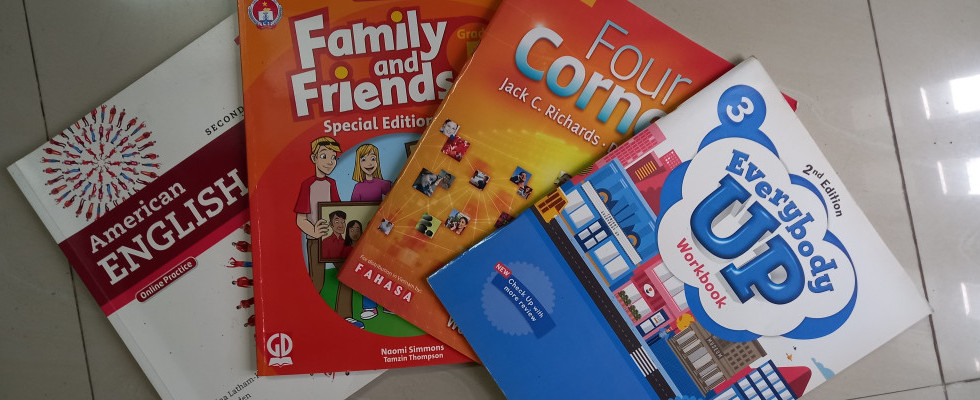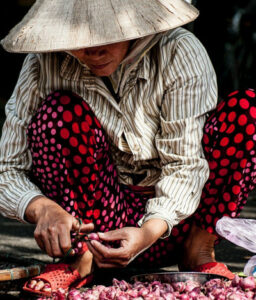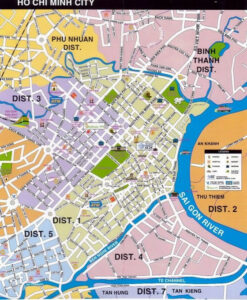The main areas of employment and teaching are in either privately or company owned schools’ ( such as VUS, ILA and a host of others) or in the public schools’. Primary or secondary schools’ will be what I am focusing on but you still have the option of Universities.
In this section I will be covering schools’, the classroom, salary expectations, recruitment and things that will make your job easier. Most of the following information is from personal experience from other teachers and myself. ( Teachers who have been in the industry for a long time).
Schools and Class sizes.
The government or public schools’ I will talk about are the primary and secondary schools’. A lot of teachers like to work in the public schools’ because they work normal hours. The hours are normally 7am to 4.30pm with a 2-hour lunch/nap break through the hottest part of the day. This is a guide only and your hours may be different to the above. Most teachers don’t work the whole day and your schedule may be morning or afternoons or a mixture of both. To work at these schools’ you will need to find a recruitment agency ( Such as Power English) or work in a privately owned school that has a contract with one of the schools’. There are a lot of recruitment agencies and their professionalism can range from non-existent to excellent. As a new teacher to Vietnam you can find a wealth of information on Facebook with groups like FETV (Foreign English Teachers in Vietnam) and English Teachers in Vietnam both of which offer good advice and feedback.
Be wary, some schools’ and recruitment agencies are not that strong in their H. R skills. In the worst instances, some smaller schools’ have been known to quickly disappear along with your monthly salary. Fortunately this does not happen as frequently as it did in the past. One of the first pieces of advice I received was to have 2 or 3 different jobs to protect you from the above. If one school closed along with your salary you would be OK financially because of the other 2 schools’. Thanks to stricter guidelines and controls this has become a rare occurrence. Generally the longer the school or recruitment agency has been around and the better the reputation the less likely anything untoward will happen.
Class sizes in public schools’ tend to be a lot higher than “western” classrooms. You should expect class sizes to be 40 – 50 students on average. There are exceptions and you will come across smaller class sizes in public schools’ especially in more affluent areas. Along with the number of students the actual size of the class can be larger than you may expect. I would suggest investing in a microphone and speaker so you don’t lose your voice while teaching. I personally recommend a wireless blue tooth headset that connects to a speaker with an output of around 30 watts. My preference is an Aporo headset with a Sony blue tooth speaker. I have this connected to my mobile phone and run all my audio through Google drive. I can thus prepare everything before class and know it will work. This gives me the freedom to walk around the classroom and being heard by everyone and not straining my voice. Most of the schools’ do provide some equipment but I prefer to use my own because of set up time and the hit or miss scenario of whether the provided equipment actually works. You can quickly lose the attention of the students if you spend 10 – 15 minutes of your lesson setting up the schools’ equipment. Large class sizes mean the attention span of the students can be short and the noise levels can be high.
I have a mini projector for my visual needs. ( more on the classroom equipment later).
The private and company owned schools’ are well resourced and perhaps apart from bringing your own “Flash cards’ ( A5 size cards that shows a picture of a word to be learnt) you will probably not need to bring any of your own equipment. Also, the class sizes are a lot smaller which means you are in a more Teacher and student friendly environment. Class sizes are normally around the 10 – 15 people level but can be more or less. The “private” schools’ are normally well provided for and can have computers, DVD’s, CD players, overhead projectors and microphones depending on the level of commitment of the owners. While it is good to have these resources it is without a doubt the skills of the teacher that make it an effective class. The other major difference between public and private schools’ are the teaching times. The hours for a private school are in the evening, Mondays to Fridays, 5.30pm – 7pm and 7.30pm – 9pm. (Some classes can be 2 hours long) and Saturdays and Sundays. These being 8am – 9.30am and 10am – 11.30am in the morning. Afternoon classes 3.30pm – 5.00pm and evening classes 5.30pm – 7pm and 7.30pm – 8pm. Each school can have different hours for teaching as laid down by the school owners or managers. There can be different levels of resources for the teacher but as standard most schools’ have course books and flashcards. As a teacher in either a public or private school you will be expected to follow a course curriculum.
Books, Schools and class curriculum
Whether you work for VUS, ILA or the British International school Vietnam or a public school or one of the many other schools’ or kindergartens you will be expected to follow a curriculum. Most schools’ will want you to teach about 2 pages per lesson. This is where your skills and techniques will come into play. One of the standard books of old ( and still being used) is Family and Friends 1,2,3, etc. When you first start, and look at the 2 pages you are asked to teach, you may well think… How am I going to make these 2 pages last for 2 hours, let alone 15 minutes. When you first start teaching it is advisable to have a range of material in your bag. Educational games are a lifesaver that will help you fill in the time as well as being important to the lesson. I am a firm believer in the laugh and learn style of teaching. If you make the lesson entertaining and fun the students will remember the content. If the lesson is boring the content will go in one ear and out the other. Young children, 4-6 year old, love coloring and there is a lot of material on the web that can help. education.com/worksheets, english4-kids.com, bogglesworld.com, worksheetfun.com, firstpalette and a lot of others provide free resources to the busy teacher.
For the older children you can provide handouts that are lesson related. They can be for work or fun. A great website for these students is englishworksheets.com. And you will, over time, learn a lot of games that are helpful in teaching and learning. You have games like “stop the bus’, English charades, ABC animals, food,countries etc. ( A -apple, b – banana, c – candy etc), hangman and the list goes on and on. You will get to the stage where you can walk into any class and be able to teach at least one lesson off the cuff.
Adults, especially those who pay the fees themselves, are arguably the easiest students to teach as they are the most motivated to learn. Kindergartens are also a rewarding area for teaching if you like young learners. They also have the least time for a lesson because of the childrens attention span. Lessons run for 30 minutes and you must be able to break the lesson down into 3-4 minute time slots to keep the attention of young learners.
Every age group and skill level brings its rewards and challenges. If I was to go through and list everything my website would be bigger than “War and Peace”
In all of these classes you will have a T.A (teachers assistant). Some can be helpful, some not so much. They are generally provided to keep the students in order, however you should be able to do this by yourself. You must have the overall authority in the classroom and keeping firm control of the classroom is paramount in being respected and giving a good lesson. Classrooms should be fun but the students must know the boundaries. A good teacher will find the techniques to running a successful class.
Salary expectations and recruitment
All salaries are negotiable but the average salary is around the 400,000 dong to 550,000 dong range for a native English speaker (N.E.S). Salaries legally have to be quoted in Vietnamese dong but these prices are equal to $17.20 to $23.65. Salaries can be lower or higher and can come with other benefits that will be offered or negotiated at the interview.
Facebook and Facebook groups are a great way to find a job. Word of mouth and introductions are also another great way to gain employment. I would love to know how many jobs have been gotten over a few drinks in bars and clubs. One service I can provide is introduction to schools’ and recruitment agencies if it is required.
Conclusion
I have attempted to cover as much as possible in this section but undoubtedly have missed one or two things. This website is a work in progress, so please continue to come back. Introduce yourself, make friends with myself and others. And, most importantly, I wish you a bright future as an English teacher.






